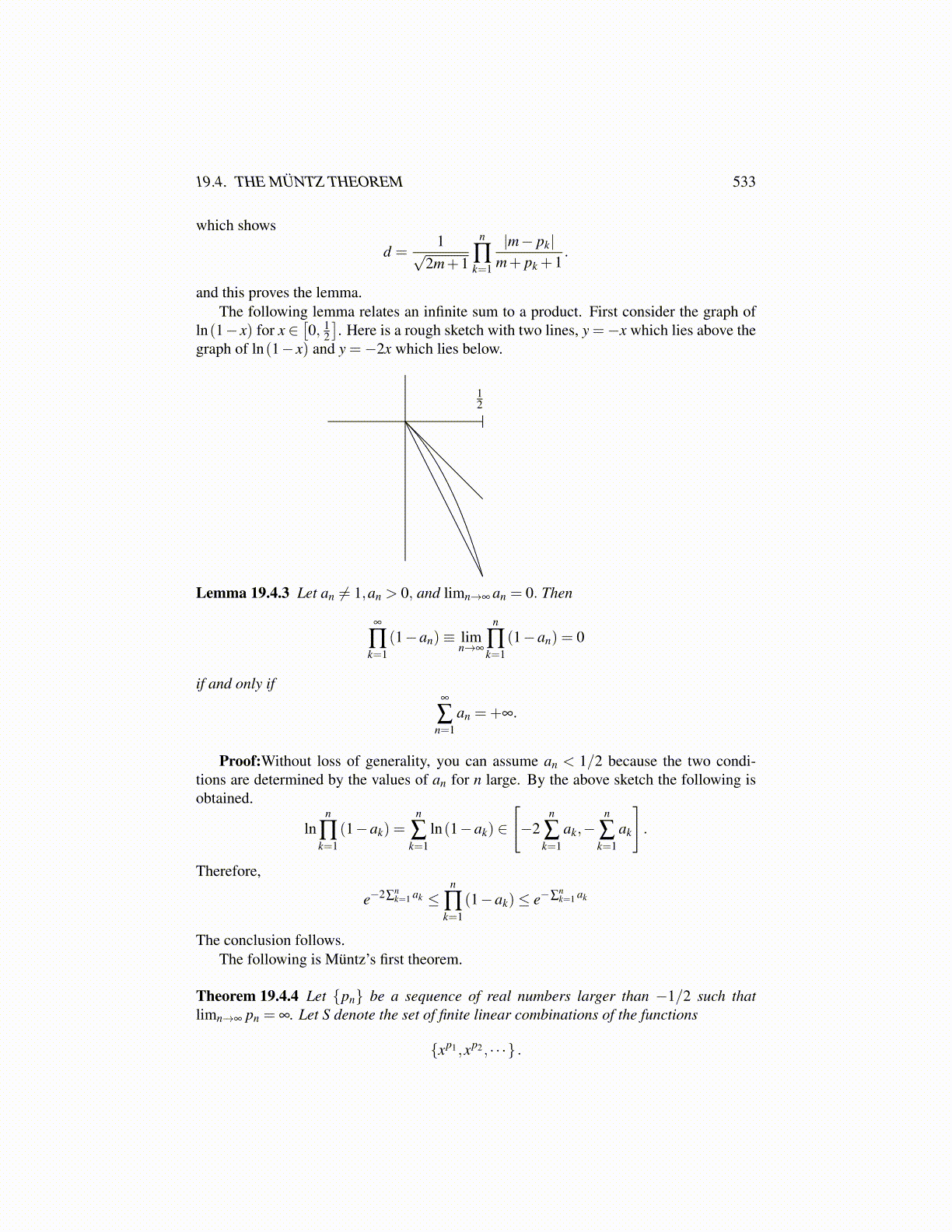
19.4. THE MÜNTZ THEOREM 533
which shows
d =1√
2m+1
n
∏k=1
|m− pk|m+ pk +1
.
and this proves the lemma.The following lemma relates an infinite sum to a product. First consider the graph of
ln(1− x) for x ∈[0, 1
2
]. Here is a rough sketch with two lines, y =−x which lies above the
graph of ln(1− x) and y =−2x which lies below.
12
Lemma 19.4.3 Let an ̸= 1,an > 0, and limn→∞ an = 0. Then
∞
∏k=1
(1−an)≡ limn→∞
n
∏k=1
(1−an) = 0
if and only if∞
∑n=1
an =+∞.
Proof:Without loss of generality, you can assume an < 1/2 because the two condi-tions are determined by the values of an for n large. By the above sketch the following isobtained.
lnn
∏k=1
(1−ak) =n
∑k=1
ln(1−ak) ∈
[−2
n
∑k=1
ak,−n
∑k=1
ak
].
Therefore,
e−2∑nk=1 ak ≤
n
∏k=1
(1−ak)≤ e−∑nk=1 ak
The conclusion follows.The following is Müntz’s first theorem.
Theorem 19.4.4 Let {pn} be a sequence of real numbers larger than −1/2 such thatlimn→∞ pn = ∞. Let S denote the set of finite linear combinations of the functions
{xp1 ,xp2 , · · ·} .